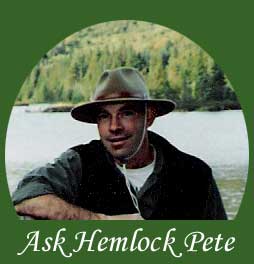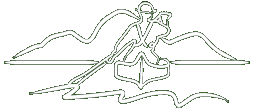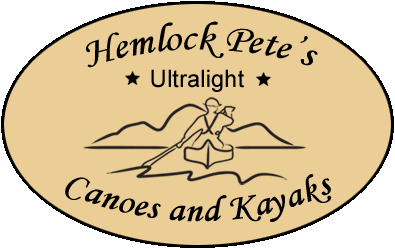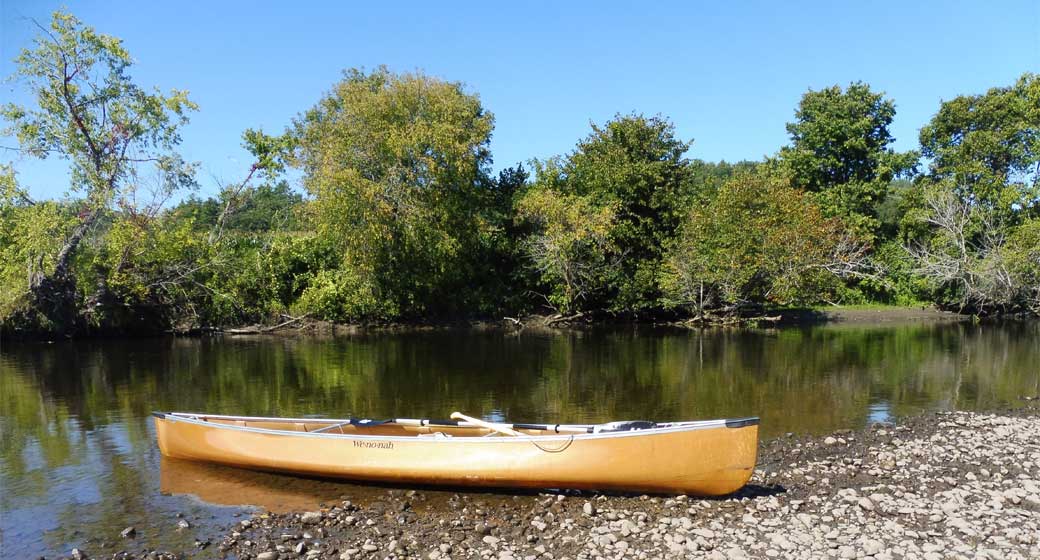




![]() Ultralight boats!
Ultralight boats!
How to go in a Straight Line
How do I get a canoe to go in a straight line? This is one of those questions that just simply won't go away. Everybody has an opinion, as well as a technique to go with it. Many people believe that a keel is the secrete ingredient for keeping a canoe on course. From my own experience, I cannot justify this claim. A well designed canoe, whether it is a modern 30lb marathon racer, a century old EM White guide model, or even a traditional bark canoe, you will not find a keel on them. They rely on paddler skill and hull design which is exactly how I feel.
Piloting your canoe on a straight course is a simple task, it does however require some practice. Like anything else, the more you do it, the better you will become. A competent paddler can overcome even a poorly designed craft and put it where and when she/he desires.
There are four basic skills required to properly control your canoe effectively. The first one would be a solid, dependable forward stroke. Every thing else is born out of this cornerstone. Of all the canoeists on the water, there are only a few that I have seen that perform this stroke properly. If I could offer a single piece of advise to paddlers of all levels it would be to always try to improve on your forward stroke. The second item on the list would be a J-stroke. Whether you paddle in a traditional style, staying on one side for extended periods, or use the higher performance switching method, this stroke is a must. When performed properly, it will subtly counteract the leverage advantage had by the stern paddler. As you spend more time on the water it is inevitable that you will encounter wind, waves, and current. All of these can have a profound effect (positive or negative) on how straight you travel. Item three on the basic skills list is the ability to handle these conditions. They consist of both mental and physical skills which I promise to discuss at some future date. The fourth and final item is the ability to trim your canoe. I am not sure if this an actual skill or more just taking the time to make the effort necessary to accomplish it. Keeping the boat level (most of the time this means keeping the bow down) allows it to perform as it was intended to. That is, if it was designed well enough in the first place.
Now let's take a look at some design features that have an effect on a canoes ability to track. The keel line is the main player here. Set your canoe upright on a flat piece of grass, step back to the side and check out how it touches the ground. If it is in contact with the grass for its entire length then you have a flat (straight) keel line. If it curves up on the ends then it is considered having rocker. A completely straight keel line will, when properly paddled, track much better then one with rocker. The more rocker it has, the more skill and effort it will take to make it track. Another design feature to consider is the "Fish-eye View" of the canoe bottom. The ultimate here is an asymmetrical shape with the widest point to the rear of the center, also known as swedeform. This configuration gives you a long sharp entry line, spreading the water cleanly, setting a straight course for the rest of the boat to follow. The wider stern section has extra buoyancy which helps to keep the boat riding level and thus on a straight course.
Happy Paddling!!

Have a question? I'm happy to answer it - just email me at hpcanoes@gmail.com
![]()
hpcanoes@gmail.com
603.667.5112

We specialize in ultralight solutions and offer expertise in canoes and Wee Lassie boats, as well as all the related equipment. Our favorites are Wenonah canoes and Wee Lassie boats. Although we will work with any material we like to get folks set up with lightweight canoes so you can dedicate your time to the joy of being out on the lakes and rivers instead of struggling to move your boat between car and water.
Scott Edwards, "Hemlock Pete" himself, offers you decades of paddling expertise. He is friendly, down-to-earth, and provides superior customer service. You won't find a better, or more pleasant, deal elsewhere.

